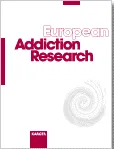| Titre : | Identification and assessment of drug-user groups among nightlife attendees: Self-reports, breathalyzer-tests and oral fluid drug tests (2019) |
| Auteurs : | A. L. BRETTEVILLE-JENSEN ; J. BURDZOVIC ANDREAS ; L. GJERSING ; E. L. OIESTAD ; H. GJERDE |
| Type de document : | Article : Périodique |
| Dans : | European Addiction Research (Vol.25, n°2, February 2019) |
| Article en page(s) : | 93-102 |
| Langues: | Anglais |
| Discipline : | PRO (Produits, mode d'action, méthode de dépistage / Substances, action mode, screening methods) |
| Mots-clés : |
Thésaurus géographique NORVEGEThésaurus mots-clés MILIEU FESTIF ; DEPISTAGE ; ANALYSE CHIMIQUE ; TEST ; ALCOOLEMIE ; AUTOEVALUATION ; PRODUIT ILLICITE ; ALCOOL ; ETHYLOTEST ; USAGER ; CLASSIFICATION |
| Résumé : |
BACKGROUND AND OBJECTIVES: Even though nightlife studies with potentially intoxicated participants provide the much needed information on drug use, they face additional methodological challenges. This study aimed to explore the utility of such studies by (i) classifying nightlife attendees based on their self-reported drug use and by (ii) examining whether these classifications were meaningful when assessed against other sources of data, including oral fluid drug tests.
METHODS: Self-reported questionnaires, oral fluid samples and blood alcohol concentration readings were collected in a sample of 1,085 nightlife patrons recruited outside 12 popular nightclubs in Oslo, Norway, in 2014. Patrons were classified using multiple approaches, including latent class analysis. Group differences were examined by logistic regression models. RESULTS: Participants were classified into 5 mutually exclusive groups: 2 among current non-users ("Never-users"; "Previous users"), 2 among current users ("Multiple drugs"; "Cannabis mainly") and one "Incomplete information" group. Meaningful differences across these groups were observed. For instance, positive tests for any illicit drug were more common in "Multiple drugs" group than in "Cannabis mainly" (62.7 vs. 29.1%, adjusted OR [aOR] 3.77 [2.42-5.84]) or "Incomplete information" groups (62.7 vs. 34.4%, aOR 2.46 [1.26-4.79]). Despite their self-declared non-use, illicit substances were detected in oral fluids of "Never-users" (13.1%; 95% CI 9.9-17.2) and "Previous users" (7.9%; 95% CI 5.1-12.1). CONCLUSIONS: Despite some discrepancies between self-reports and biological tests, self-reports proved both suitable and useful in identification of substantively different drug-user typologies, potentially informing targeted policy responses. Still, methodological challenges associated with onsite studies of illicit drug use should be further explored. |
| Domaine : | Alcool / Alcohol ; Drogues illicites / Illicit drugs |
| Refs biblio. : | 37 |
| Affiliation : | Department of Alcohol, Tobacco and Drugs, Norwegian Institute of Public Health, Oslo, Norway |
| Cote : | Abonnement |
 Accueil
Accueil



